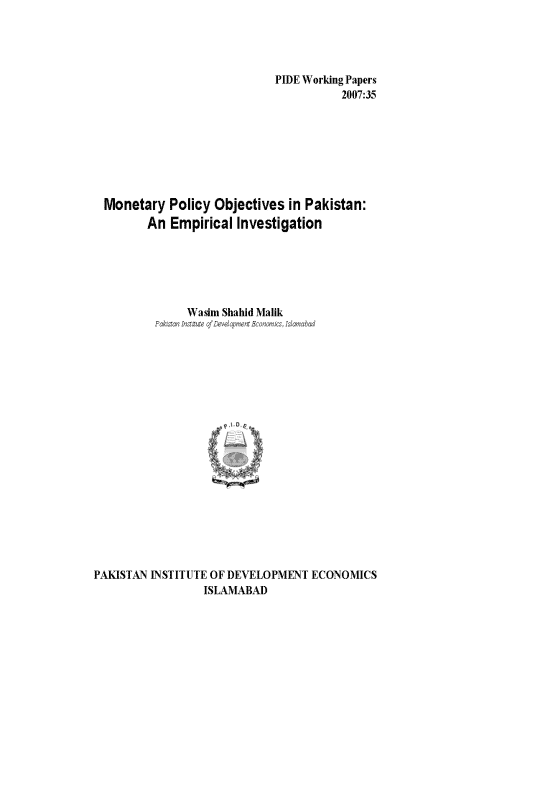Monetary Policy Objectives in Pakistan: An Empirical Investigation
The Taylor rule (1993) focuses only on two objectives: output and inflation. In practice, the central bank’s loss function (especially in developing countries) contains objectives other than these two, like the interest rate smoothing, exchange rate stabilisation, etc. In this study, the monetary policy reaction function has been estimated, including five objectives for monetary policy as well as controlling for the effect of three other factors. Whereas the results confirm the counter-cyclical response of monetary policy to the factors in the loss function, the response of interest rate to changes in the foreign exchange reserves and the government borrowing has been negative. Variance decomposition shows that most of the variation in the interest rate is explained by its own lagged values. Other variables, in explaining variation in the interest rate, can be ranked as inflation, government borrowing, exchange rate, output gap, trade deficit, and, finally, the foreign exchange reserves.




